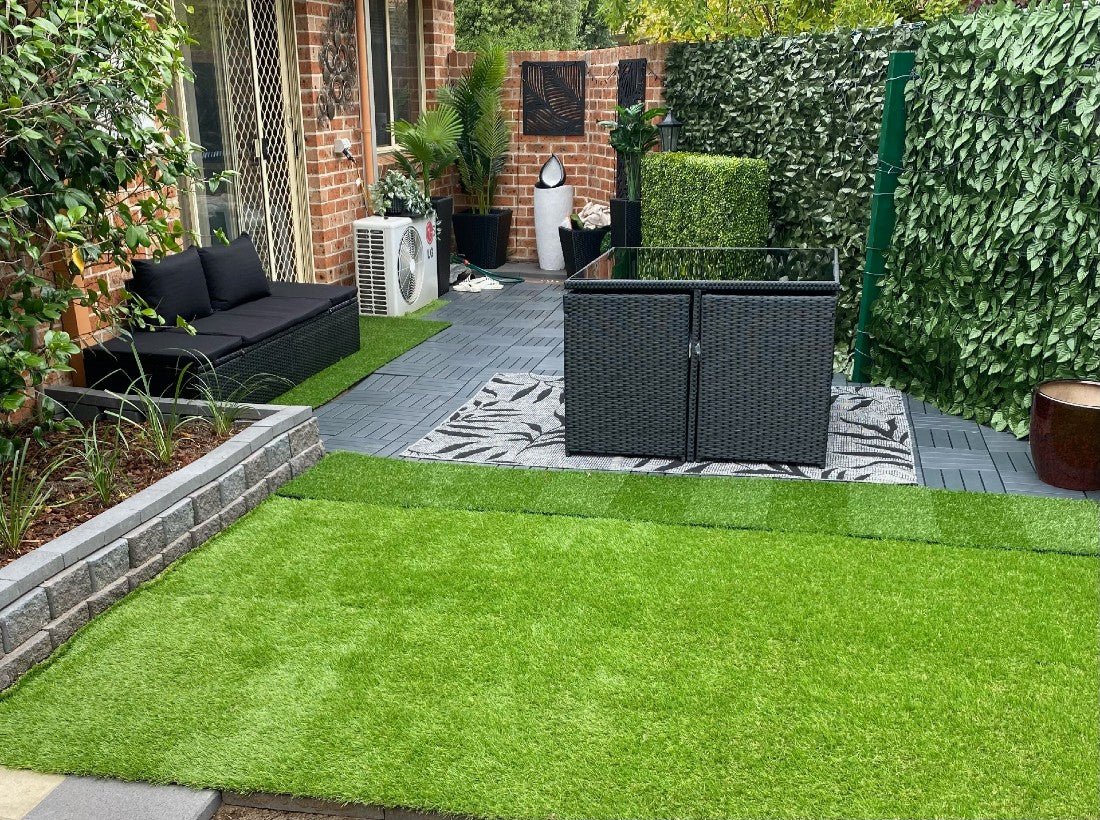In a world where lushness meets controversy and Mother Nature gets tangled in a web of synthetic intrigue, an environmental debate is likely to sprout. To get to the root of the question germinating in the minds of eco-conscious individuals, we’ve set out to explore a peculiar predicament - is artificial greenery truly a ‘green’ choice?
Before you frantically weed out any preconceived notions, look at the swiftness with which faux foliage has been overtaking its living counterparts.
Existing on a floating rock teeming with environmental concerns may have you believe that swapping out living plants for their synthetic doppelgängers might be the answer to our carbon-caked conundrum. But wait… is it really?
Well, we can’t make lofty scientific claims, but we can tell you how an artificial vertical garden can guide you toward a more sustainable lifestyle.
Let’s dig in!
How Are Artificial Green Walls Good for the Environment?
Faux green walls have emerged as a formidable contender that offers a slew of benefits that extend beyond aesthetic appeal. Here are some reasons why fake vertical gardens have the power to transform our environmental landscape:
They Last Long
To preserve their youthful appearance, natural plants require continuous care and maintenance. On the other hand, artificial greenery boasts impressive longevity and a ‘lifespan’ ranging from 5 to 15 years with minimal upkeep. Such longevity adds permanence to your space without you having to put aside hours to satisfy your plant’s every whim.
But how does our fauxliege ‘survive’ this long? Well, it’s engineered with durable materials like low-density polyethylene (LDPE) and advanced manufacturing techniques which save you from the hassle of replacing greenery year after year.
They Conserve Water
In a society grappling with water scarcity, the conservation of such a precious resource is fundamental. Unlike living foliage that relies on consistent watering and irrigation systems that cost a pretty penny, faux green walls can proudly bear the banner of water efficiency. Our synthetic marvels save vast amounts of water throughout their time on your wall and eliminate the need for hydration.
The gallons spared and the positive ripple effect it can have on the planet’s limited freshwater supply will both help the planet and save you time and money, without draining nature’s most vital element.
They’re Recycled and Recyclable
Environmental responsibility extends far beyond a product’s usefulness and delves deep into its end-of-life journey. All Designer Plants artificial green walls are crafted with recycled and recyclable eco-friendly materials. When the time comes for a refresh, our dedicated recycling program ensures these beauties find a new purpose and evade landfills.
By participating in a recycling initiative, you will actively contribute to the circular economy, minimize waste, and reduce the environmental footprint caused by wastefulness. Our commitment to sustainability runs deep and we’re focused on ensuring that artificial greenery is the behemoth of the future.
They’re Weather-Resistant
If you intend to set your faux vertical garden outside, you’ll need to take some precautions into account. Since nature can be fickle, it can often subject our green companions to harsh weather conditions. If our vertical gardens were real, they would crumble under the pressure to stay upright during a downpour or keep their leaves during a snowstorm.
But artificial greenery stands resilient against the elements thanks to its built-in protection. Faux greenery from Designer Plants is frost resistant and will remain unscathed even during the most perilous of winters, while its in-leaf UV protection ensures its vibrant hues withstand prolonged exposure to the sun without deteriorating.
They’re Free from Harmful Toxins
Amidst growing concerns about air quality, artificial green walls can offer solace and provide a breath of fresh air - literally. Since natural plants need a whiff of pesticide spray now and again to retain their vigor and protect them from pests and insects, it could cause health issues for some people and contribute to air pollution.
By opting for artificial greenery, you ensure a cleaner and healthier environment that allows you to enjoy all the benefits without any compromises. Because the leaves are synthetic, they won’t attract insects and you needn’t spray them with anything more abrasive than window cleaner. Plus, most products have labels certifying that they’re free from hazardous substances, which we’ll talk about below.
What Do Our Labels Mean?

While perusing our extensive catalog of fake green walls and vertical gardens, you’ll come across abbreviations that might leave you puzzled. To avoid unnecessary confusion, here’s what our labels mean:
ISO Certification
An ISO (International Organization for Standardization) is an independent, non-governmental body tasked with setting globally recognized standards for quality, safety, and environmental performance. This label certifies that a manufacturer has adhered to rigorous standards during their production process and has implemented a comprehensive quality management system.
When the discourse is on artificial green walls, it means that each product was crafted with consistency and meets stringent quality benchmarks, giving you confidence in its durability and indicating that the production process follows sustainable practices.
RoHS Compliance
The RoHS (Restriction of Hazardous Substances) is a directive aimed at reducing the use of harmful substances in electrical and electronic equipment. Although this might be confusing since artificial green walls don’t fall under this category, the RoHS can be used to ensure that other types of products are tested for and free from 10 restricted substances, including:
- Cadmium
- Lead
- Mercury
- Hexavalent Chromium
- Polybrominated Biphenyls
- Polybrominated Diphenyl Ethers
- Bis(2-Ethylhexyl) phthalate
- Benzyl butyl phthalate
- Dibutyl phthalate
- Diisobutyl phtalate
When you see this label on any product (inlcuding a faux vertical garden), you can rest assured that the manufacturer has contributed to the protection of human health and the environment by minimizing the use and release of hazardous substances.
REACH Compliance
REACH (Registration, Evaluation, Authorization, and Restriction of Chemicals) is a regulation that governs the production, import, and use of chemicals. Although fauxliege doesn’t contain a high level of chemicals, our REACH compliance solidifies our commitment to ensuring the responsible use of chemicals in the manufacturing process.
This regulation helps manufacturers and suppliers demonstrate their dedication to protecting the environment and shielding humans from harmful toxins. By doing so, it reinforces the transparency of the company and assures you that your fake greenery meets strict regulations and doesn’t pose a risk to your health.
Finishing Thoughts
It’s not difficult to grasp the inherent benefits of artificial green walls and acknowledge their potential to revolutionize sustainable living. From their impressive longevity and water conservation traits to their recyclability, faux vertical gardens simply embody eco-consciousness.
Embracing artificial greenery means embracing a greener choice that marries aesthetics, functionality, and environmental responsibility. Ultimately, it creates visually-captivating and resource-efficient spaces conducive to a healthier, wealthier planet.


